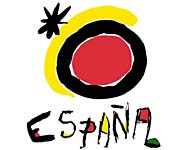Nation Branding: What the World Can Learn From Spain, India and New Zealand
Travel Blog • Michael Yessis • 12.21.06 | 7:30 AM ET

They’re “universally acknowledged to be the crown jewels in the recent annals of nation branding,” writes John Cook in the January 2007 issue of Travel + Leisure, the latest publication to address one of our favorite topics: how countries present themselves in an effort to lure travelers. Cook recounts success stories—Spain’s transformation from a “sleepy low-rent vacation spot for the British and German working classes to a hip, cutting-edge cultural destination” and New Zealand’s capitalization on its starring role in the Lord of the Rings trilogy—but, more interestingly, also examines countries with branding problems. Among them: Serbia, Ecuador and Kazakhstan.
If you think Ecuador is a 107,000-square-mile nation of 13 million on the western coast of South America, bordered by Colombia to the northeast and Peru to the southeast, well, you’re right. And Coca-Cola is carbonated water, high-fructose corn syrup, and caramel color. But neither formulation exactly has product flying off the shelves. And just as Coca-Cola has invested millions, if not billions, of dollars over generations to convince consumers that Coke has a personality, an attitude, a lifestyle, a whole menu of emotional experiences wrapped up inside each can, Ecuador and dozens of other countries are using increasingly sophisticated versions of “brand theory” to attract visitors. Indeed, place branding may be more important than ever, both as a way of standing out from the competition and as a ballast against the buffeting winds of an increasingly global popular-media culture that can shape perceptions drastically and in an instant. Exhibit A: Kazakhstan, as represented in the viciously satirical (and highly successful) film Borat. Could the damage to the image of that Central Asian country—seen in the film as a backward, anti-Semitic, dictatorial regime that’s tolerant of incest and spousal abuse—have been mitigated by a branding campaign? Who knows. But it’s clear that Kazakhstan’s triage public relations campaign (ads touting its religious tolerance and ties to the United States in the New York Times and the International Herald Tribune) was a case of too little, too late.
As for Serbia, Malcolm Allan, a brand consultant and cofounder of Placebrands, has this advice: “They need to find their war criminals and hand them over to the European justice system and to deal with nationalism.”
In related nation-branding news, FutureBrand last month released its second annual Country Brand Index. Last year, Italy ranked No. 1. This year, Australia took the top spot. Other selections include:
Best Country Brand for Authenticity: India
Best Exotic Country Brand: Peru
Best Country Brand for Beaches: The Bahamas
Best Country Brand for Safety: Canada
Ron Mader 12.22.06 | 10:33 PM ET
Very interesting story ... one question that should be asked is how to in country tour operators work with those promoting the countries? Usually, the answer is they don’t. In many countries PR companies are brought in and swept out in what appears to be a single move.
What would be an interesting read would be an evaluation of branding, not just from a single campaign but national profiles over 2-5 years.